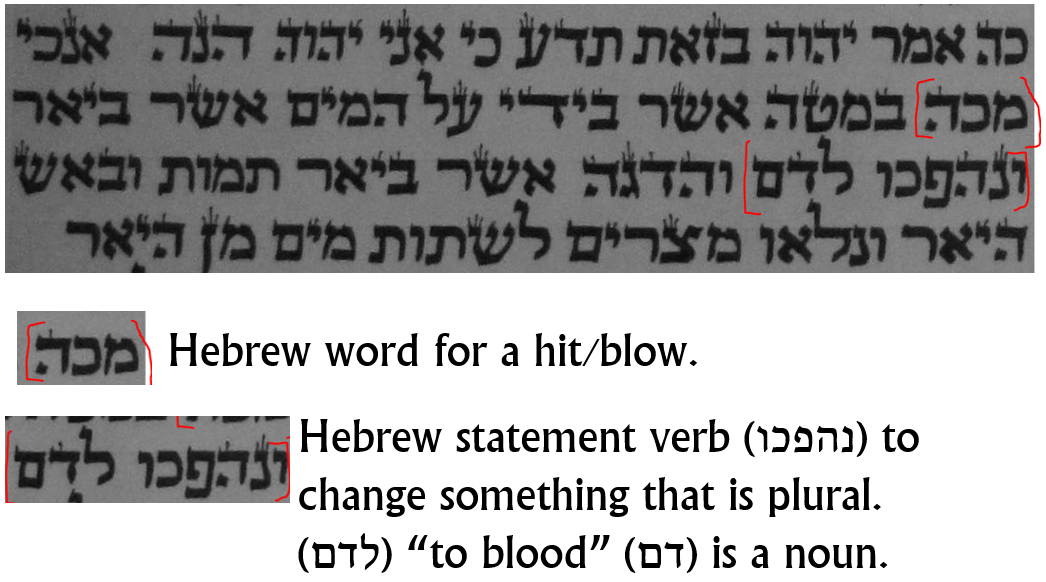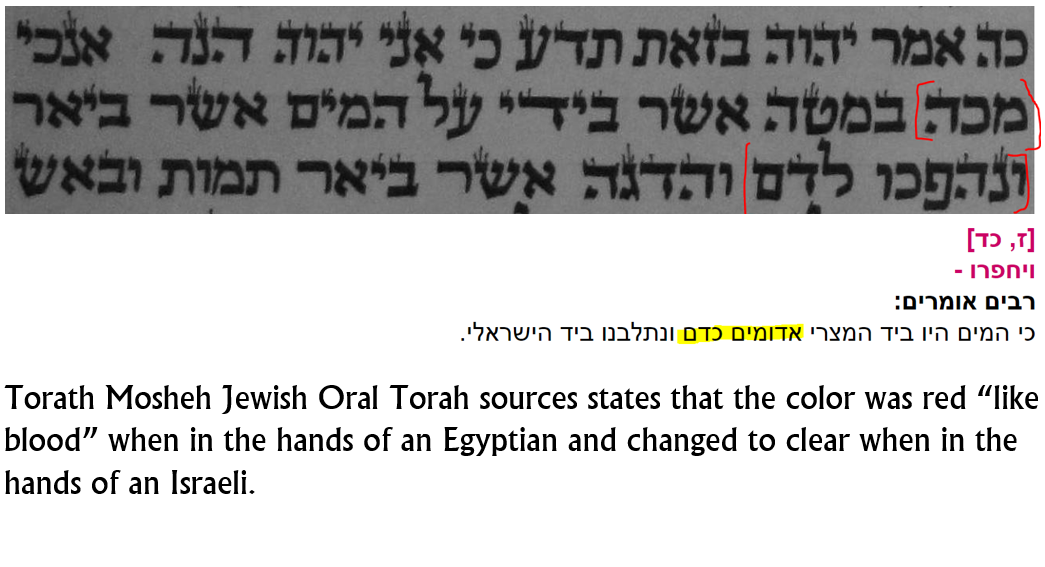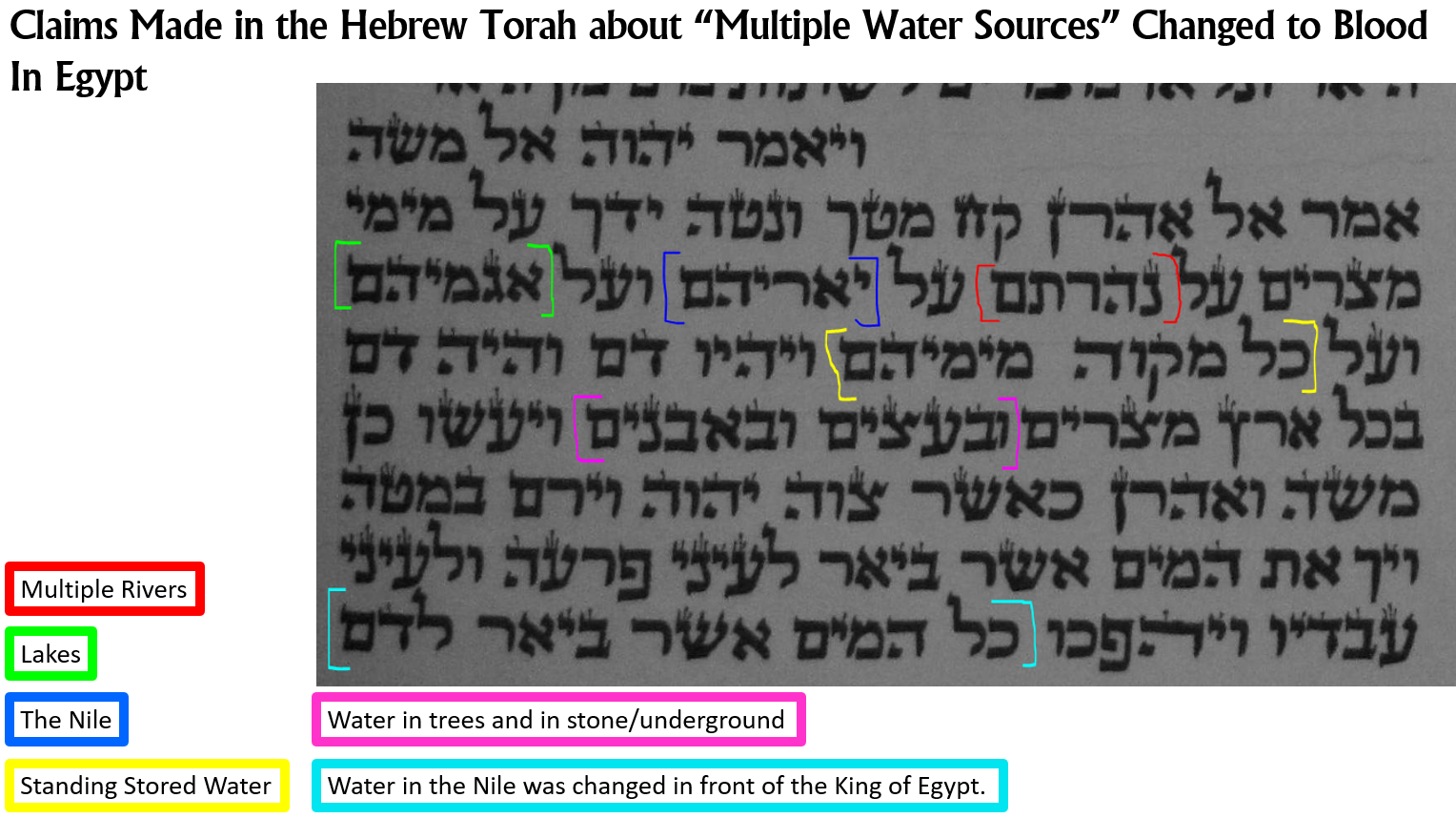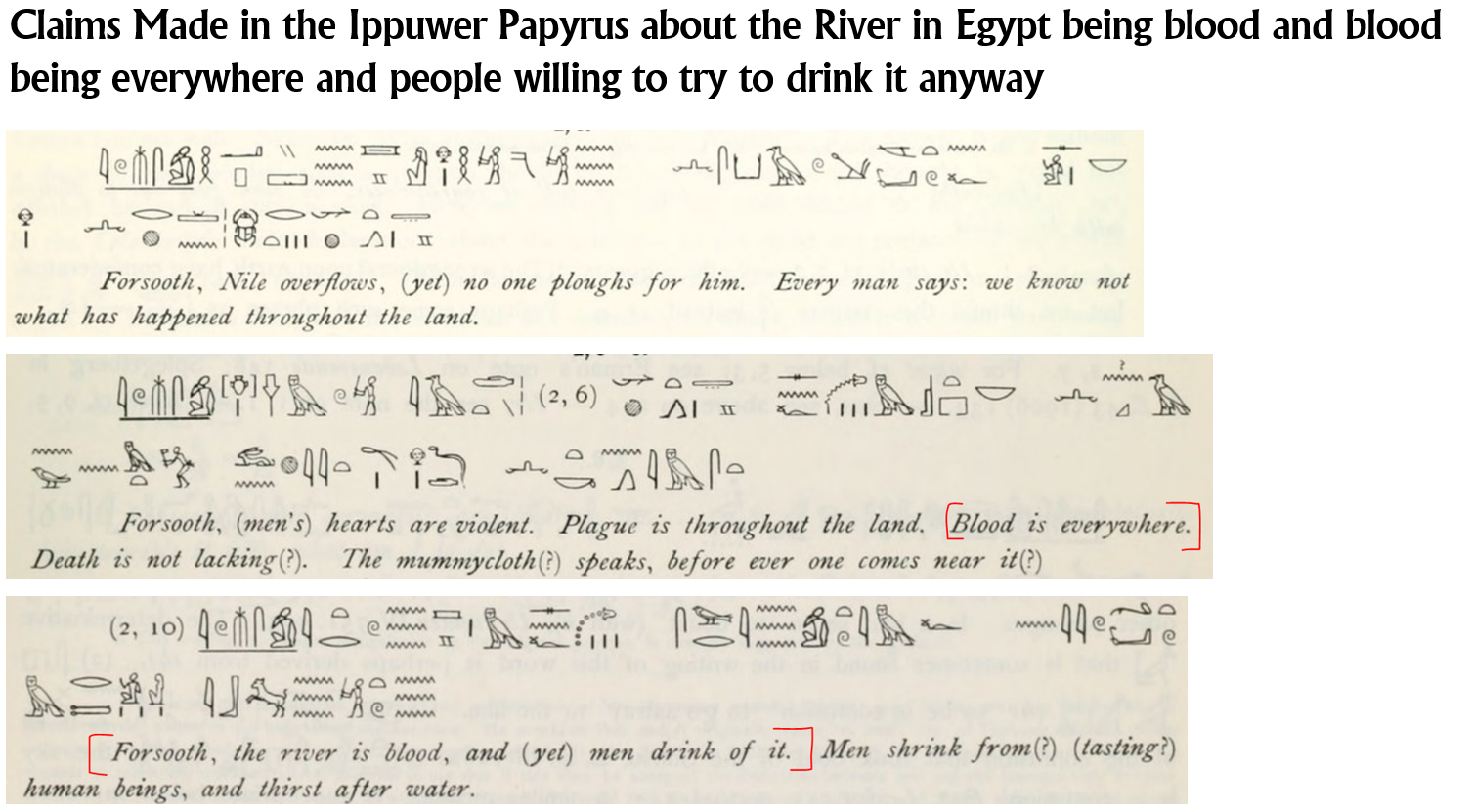Also, be aware that I addressed these in the following comments I made earlier in this discussion.
I tried to look up the seven points you made earlier. I am not sure if I reached them. I am giving my responses to those where I could find your comment (other than those that only gave video links). I have marked the discussion as “EV” and “BJ.” I request that you may kindly consider and reply to each point.
EV2. Oral traditions say the color was red.
BJ2: Oral traditions are not Word of God. These have been made after the Exile when the original geography was lost to memory and Indus geography was transposed to West Asia.
We find that 34 places listed in the endnote are mentioned in both the pre- and post-Exodus narratives of the Bible (Ai, Assyria, Avith, Beersheba, Bethel, Canaan, Dothan, Edom, Egypt, Gerar, Gilead, Goshen, Havilah, Hebron, Jordan, Kadesh, Kiriath Arba, Luz, Mahanaim, Midian, Moab, Moreh, Moriah, Negev, Paran, Penuel, Philistine, Yam Suph (Reed Sea), Seir, Shechem, Shur, Succoth, Zeboim and Zoar). Our hypothesis is that the pre-Exodus events were located in the Indus Valley and the post-Exodus events were located in Yisrael. The mention of these 34 places in both the narratives could be explained by postulating that the Hebrews carried names of these places from the Indus Valley and gave them to certain places in Yisrael that now carry these names. We see that migrants frequently give names of their home locations to their host locations. For example, the names Liverpool, London, and York have been carried from the United Kingdom and given to Liverpool in New South Wales, Australia; London in Ontario, Canada; and New York City in the United States.
In this same manner we suggest that the Hebrews gave the name “Aravalli” of the mountain in the Indus Valley, modified as “Ararat,” to the mountain in Turkey that carries that name today. They gave the name “Meru,” modified as “Moriah,” to the Temple Mount at Jerusalem. They gave the name “Yamuna,” modified as “Jordan,” to the river of Yisrael that carries this name today.
At the same time, 27 places listed in the endnote are mentioned only in the pre-Exodus narratives of the Bible and not mentioned in the post-Exodus narratives (Abel Mizraim, Admah,* Atad, Beer Lahai Roi, Bela, Eder, Elam, Ellasar, Galeed, Gomorrah,* Haran,* Machpelah, Mamre, Pau, Padan Aram,* Peniel, Rehoboth,* River of Egypt,* Shinar,* Siddim, Sin,* Sinai,* Sitnah, Sodom,* Tidal, Ur of the Chaldeans,* Zeboim* and Zin.* Place names marked with asterisk are mentioned in the post-Exodus narrative always alluding to the pre-Exodus events). These include important places like Sodom, Gomorrah, Siddim, and Sinai. This is surprising because the Hebrews travelled frequently through the areas where these places are allegedly located in Yisrael. They would have passed through these places after reaching Yisrael and could not have but noticed the existence of these places. For example, Sodom is allegedly located on the banks of the Dead Sea in Yisrael. The Hebrews passed through this area many times after they reached Yisrael. They would have remembered the existence of Sodom here. But we do not find them mentioning this city in their post-Exodus narratives as a living city. All references to Sodom in the post-Exodus narrative invariably refer to the events that took place here before the Exodus took place.
This leads us to suggest that, unlike the earlier list of 34 places, the migrants did not give the names of these 27 places to places in Yisrael. The absence of mention of these cities in the post-Exodus narratives as living places suggests that these were located at a place other than Yisrael, possibly in the Indus Valley.
>>> Please paste this thread and reply to this point here so that I can keep track.
xxx
EV3
BJ3: There is no statement of the Nile becoming red. Nile is the defining feature of Egypt. The first reference appears to be such a geographical indicator. The reference to blood is not related to water. Further, we have to make a comparative assessment:
Geography 1 Flood Waters. MP (Mesopotamia): No evidence of flood waters staying for 150 days. IV (Indus Valley): Bowl-like structure near Jalore could hold waters for 150 days.
Geography 2 Distance between Flood area and Ararat traversable by boat: MP: Ararat Mountains are located 600-1000 km from the flood area. Aravalli mountains located 150 km from the flood area.
Archaeology: MP: Evidence for habitation at 8000 BCE. Evidence of flood at 3000 BCE. IV: Floods on Luni River started at 3000 BCE.
Names: MP: No name parallel to Noah. IV: The name “Ararat” not found in ancient texts. IV: “Noah” is written as “Noach” which is then also written as “Manowach.” “Manowach” and “Manu” both have the same two consonants “M” and “N.” Ararat=Aravalli. The name Jalore of the place where the flood took place means “city of water.”
Literature: MP: Gilgamesh tells of the Flood in Dilmun that is identified with the Indus Valley by Kramer. No flood tale, to my knowledge, in Sumeric literature. IV: A flood took place at the time of Vaivaswat Manu. He was saved in a boat with 7 persons.
xxx
EV4
The ability for water, in Egypt at a specific time, to turn into blood, at a very specific time in history, for the sake of what we called in Hebrew (עשר מכות) "Eser Makkot" is one of those exceptions.
BJ4: There is no parallel natural event in Egypt.
xxx
EV4A: Thus, Jewish sources describe that even in when a Mitzri and a Yisraeli were in the same area for the Mitzri it was very much (דם) and for the Yisraeli it was (מים).
BJ4A: “Soources” are not Word of God.
xxx
EV4B: Also, very important to note the word (דם) does not mean "still or stagnant" the three letter root (ד-מ-ה) that (דם) comes from means "resemble" and by some is considered to be a Gradational Varient of the roots (ד-ו-מ) and (ד-מ-מ) which "can" mean quiet based on thier grammer and structure.
BJ4B: The word dam <
01818> has its origin in damam <
01826> which means “silence 3, silent 2, die 2, kept silent 2, still 2, keeps quiet 1, Lament 1, Patiently wait 1, Stay 1, Stay put 1, quiet 1, stop 1, stopping to rest 1, stood still 1, speechless 1, unceasingly 1, killed 1.” The interpretation of “dam” as “blood” seems to come from flow of blood becoming stagnant i.e., death.
xxx
BJ4C: A peculiarity of the Indus valley is that a major river named Hakra shifted it's course from west to east. The western course became stagnant pools. Thus, six of the 10 plagues are related to shortage or purification of water.
EV4C: Actually, that is an English reading. It is not what the Hebrew text says. Even the word "plague" is not what the Hebrew text states took place. There are other places where water becomes stagnent and that is not a peculiar thing to happen in one location.
BJ4C: Please consider six of the 10 plagues are related to shortage or putrification of water.
xxx
BJ4D: But we have to show evidence of stagnant water in Egypt.






